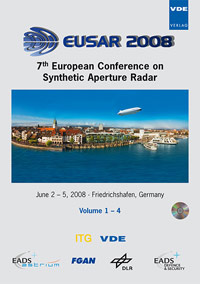One-Bit Digitization for DBF-SAR: Too Good to be True
Conference: EUSAR 2008 - 7th European Conference on Synthetic Aperture Radar
06/02/2008 - 06/05/2008 at Friedrichshafen, Germany
Proceedings: EUSAR 2008
Pages: 4Language: englishTyp: PDF
Personal VDE Members are entitled to a 10% discount on this title
Authors:
Schaefer, Christoph; Fischer, Christian; Völker, Michael (EADS Astrium, Germany)
Abstract:
How many bits of resolution can be chosen as a minimum for the quasi-lossless digitization of radar signals with low signalto- noise power ratio (SNR)? The answer to this question is important for the design of the receive electronics of future Digital Beam-Forming SAR instruments (DBF-SAR) due to their concept of multi-channel digitization. Clearly, fewer bits should be required for the digitization of a radar signal with low SNR than with high SNR because more digitization noise is acceptable in the former case. One-bit digitization would be particularly desirable from an implementation point of view. The assumptions commonly made when modelling the digitization noise are true for the many-bit case but do not hold for few-bit modelling, so a special metric is needed in this case to correctly determine SNR after digitization. This metric and simulations based on it are presented. They show that one-bit digitization always results in a loss of SNR of at least 2 dB, no matter how low the input SNR is, and that in fact as a minimum 3 bits should be used. This minimum number of bits is subject to further increase depending on the dynamic range of the signal. An engineering formula is presented which allows to quickly estimate the optimum bit number for an N-channel receive antenna and a specified dynamic range of the pseudo-Gaussian radar signal.


